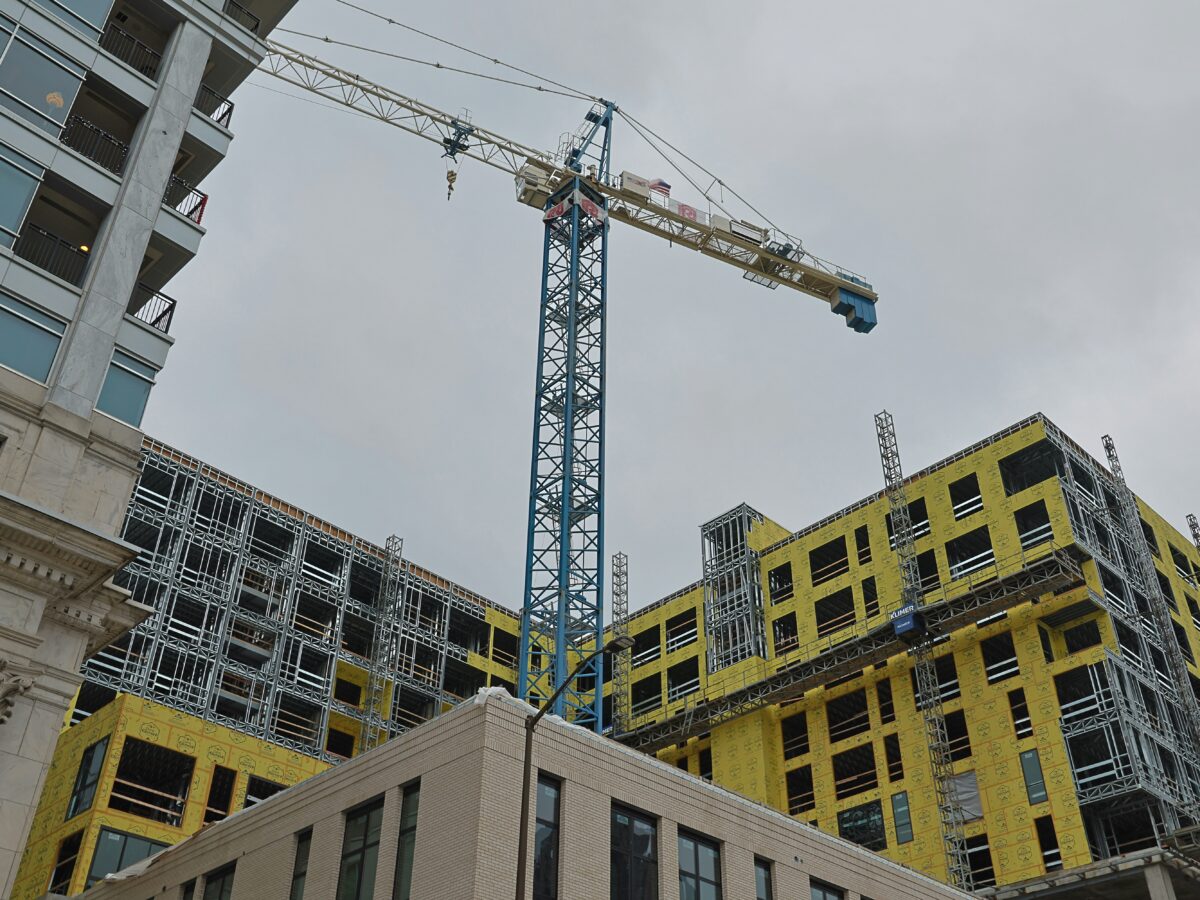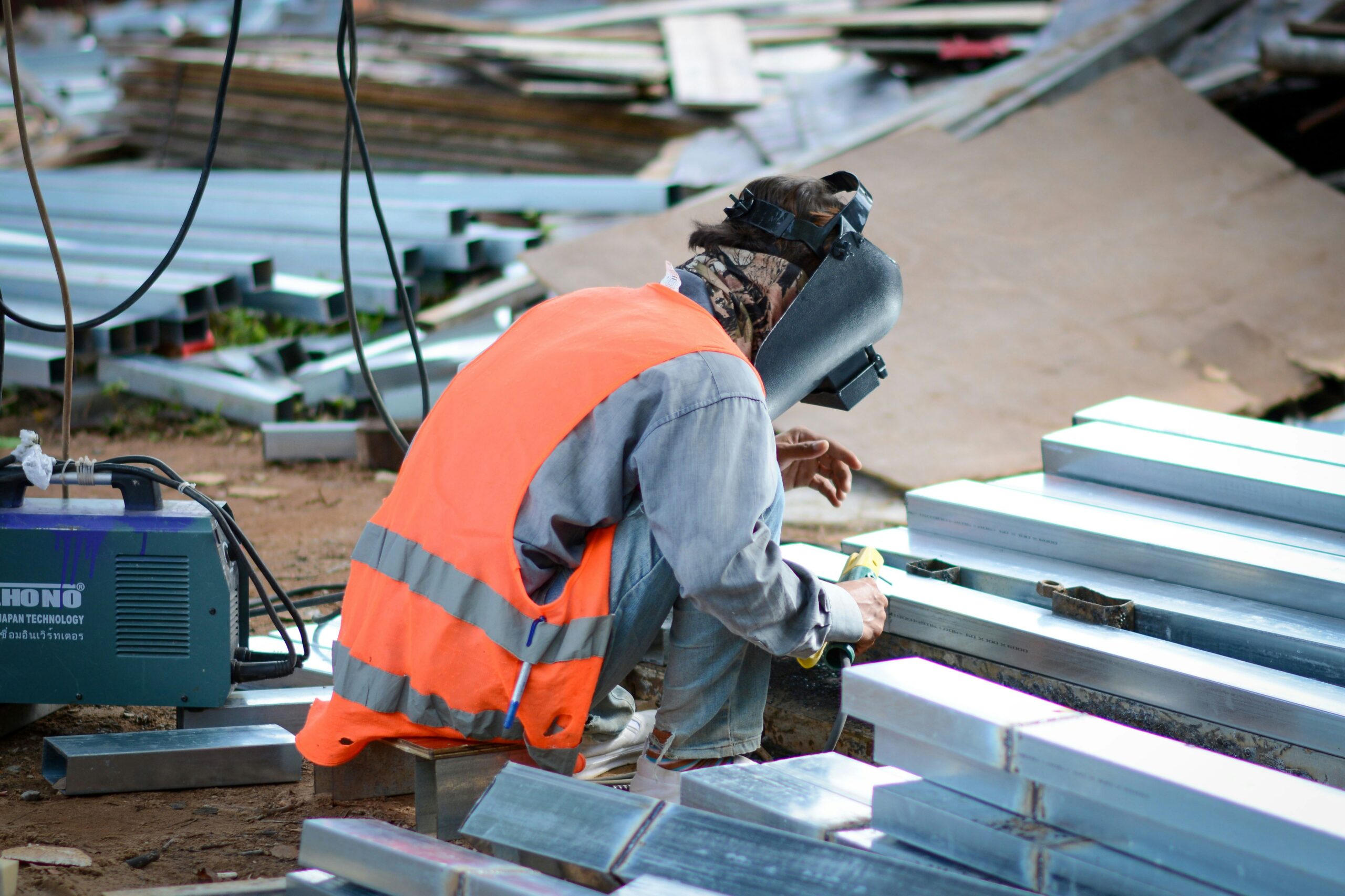As modular construction continues to transform the building industry, it’s not just architects, developers, and contractors who need to adjust—the demolition sector is undergoing a major shift as well. Traditionally centered on destruction and debris, demolition is now evolving into a more thoughtful process of strategic deconstruction, material recovery, and reuse.
This shift also places greater emphasis on health and environmental considerations, including the proper handling and disposal of hazardous materials. Asbestos, often found in older buildings, presents a critical concern. As modular construction encourages the reuse of existing structures or components, asbestos removal has become an essential step in the deconstruction process.
In this post, we’ll examine how modular construction is reshaping traditional demolition practices—from reducing waste and altering techniques to introducing new risks and opportunities that demolition professionals must navigate, including safe and compliant asbestos removal.
What Is Modular Construction?
Definition and Key Concepts
Modular construction is a method in which buildings are manufactured in standardized sections, or modules, in a controlled factory environment. These modules are then transported to the site for quick assembly. The modular approach may include:
- Volumetric modules: fully enclosed units such as bathrooms or entire rooms.
- Panelized systems: flat-packed components like walls, floors, or roofs.
- Hybrid systems: combinations of traditional and modular techniques.
With a growing emphasis on precision engineering, digital modeling (BIM), and sustainability, modular construction is redefining not only how we build but also how we deconstruct. As these changes take hold, resources like the Guide to Safe and Efficient Demolition are becoming increasingly valuable, offering professionals critical insights into navigating this evolving landscape with safety, efficiency, and environmental responsibility in mind.
Modular vs. Traditional Construction
| Aspect | Modular Construction | Traditional Construction |
| Construction Location | Offsite fabrication in controlled environments | Site-built from the ground up |
| Onsite Labor | Reduced onsite labor; faster assembly | Extensive time onsite with many subcontractors |
| Weather Impact | Minimal weather-related delays | Prone to delays due to weather |
| Design Approach | Repeatable designs that streamline scheduling and budgeting | Unique builds per project |
| Material Waste | Tighter material control with less waste | Significant material waste |
| End-of-Life Impact | Designed for easier disassembly and reuse | Typically requires destructive demolition |
Traditional construction is typically site-built from the ground up. It involves extensive time onsite, multiple subcontractors, and significant material waste. Modular, by contrast, emphasizes
- Offsite fabrication, reduces onsite labor and weather delays.
- Repeatable designs that streamline scheduling and budgeting.
- Tighter material control, leading to less waste.
This shift in methodology significantly affects what happens at the building’s end of life, particularly how it’s taken apart.
What Is the Impact of Modular Construction on the Demolition Industry?
Shift from Destructive Demolition to Deconstruction
Unlike conventional structures that require wrecking balls or explosives, modular buildings are often designed with disassembly in mind. Bolted connections, accessible service zones, and modular joints enable components to be unfastened rather than shattered.
This evolution gives rise to deconstruction—a more surgical approach to dismantling buildings with the intent of recovering reusable components.
Reduction in Construction and Demolition (C&D) Waste
Construction and demolition waste accounts for over 500 million tons annually in the United States alone. Modular construction helps reverse this trend through:
- Pre-fabrication with minimal off-cuts.
- Design for reuse, reducing landfill-bound debris.
- Reclaimed modules are finding a second life in new projects.
Demolition companies now have the opportunity to become stewards of material recovery rather than just agents of disposal.
Life Cycle Thinking and Circular Construction
The modular approach encourages “cradle-to-cradle” thinking, where materials are cycled through reuse rather than disposed of. This changes the demolition contractor’s role from end-of-life executor to a key player in the circular economy.
Builders may expect demolition teams to document and catalog components for reuse or resale. As a result, inventory management and logistics are becoming as essential as heavy machinery.
How Modular Construction Changes Demolition Techniques
Selective Deconstruction Methods
Modular demolition favors precision over power. Teams are adopting
- Hand tools and lifts over jackhammers and dozers.
- Disassembly sequences mapped with digital design files.
- Material tagging systems to track reusable modules.
This requires methodical planning and often longer timelines, but the result is significantly less waste and more materials saved.
Specialized Equipment and Skills Required
Removing an intact steel-frame modular bathroom pod is a different challenge than tearing down a drywall partition. Demolition professionals need new capabilities, including:
- Crane operation for lifting large modules intact.
- Technical skills to disconnect utilities and attachments cleanly.
- Familiarity with modular fastening systems.
Safety training and certification are increasingly necessary, especially as reused modules may carry unique structural risks.
Need for Early Collaboration with Builders
Unlike traditional demolition projects, where contractors arrive at the end, modular construction requires demolition input during design. Why?
- Designers may plan module separation points based on future demolition needs.
- Building Information Modeling (BIM) enables pre-demolition planning with 3D blueprints.
- Early coordination improves module recovery rates and safety.
Risks and Challenges of Modular Construction in a Demolition Context
What Are the Disadvantages of Using Modular Construction?
Despite its advantages, modular construction isn’t without limitations:
- Transportation challenges: modules must be moved on roads and may require special permits.
- Design constraints: Modularity can limit architectural freedom.
- Integration issues: Modular systems must fit into varied site conditions.
These constraints can complicate recovery during demolition, especially when site-specific solutions were implemented.
What Are the Risks of Modular Construction?
For demolition professionals, reused modules may introduce:
- Unknown wear and tear: repeated transport can damage connections.
- Regional code compliance: Modules may not meet codes when relocated across jurisdictions.
- Uncertain resale value: not all components are easily reused or sellable.
Understanding these risks is critical before investing in recovery operations.
Demolition Liability and Safety Concerns
Handling modules involves potential hazards not found in traditional demolition:
- Structural instability in lifted modules.
- Concealed damage from years of use.
- Utility disconnects across multiple units require careful sequencing.
Proper assessments, engineering reports, and lifting plans are key to mitigating these risks.
Opportunities for Demolition Contractors
New Business Models in Deconstruction
Modular construction opens doors for demolition contractors to:
- Sell recovered modules to secondary markets.
- Offer dismantling services as part of building decommissioning.
- Partner with modular builders to create circular asset loops.
This pivot from “tear down” to “recover and resell” transforms the demolition contractor into a materials lifecycle manager.
Training and Certification Paths
As the industry evolves, so must its workforce. Emerging opportunities include:
- Certification in selective deconstruction or green demolition.
- Training in modular disassembly and reuse logistics.
- Cross-training in BIM and digital blueprint reading.
Technology Integration
Digital tools are revolutionizing demolition planning:
- BIM models help anticipate deconstruction needs years in advance.
- AI and robotics are being piloted to assist with module removal.
- RFID and QR tagging systems track components for resale or reuse.
Firms that embrace these tools will be better positioned to lead in the modular-demolition nexus.
Conclusion
The rise of modular construction is more than a shift in how buildings go up—it’s a transformation in how they come down. For demolition professionals, the future is not about destruction, but about precision, collaboration, and value recovery.
As buildings become smarter and more sustainable, demolition must follow suit. Those who evolve alongside modular construction—adopting deconstruction techniques, engaging in early project planning, and exploring new business models—will find themselves at the forefront of a greener, more efficient built environment.
FAQs (People Also Ask)
What is the impact of modular construction?
Modular construction reduces waste, shortens construction time, and supports a circular economy through disassembly and reuse. It changes the way demolition is approached, shifting it toward planned deconstruction.
What is the difference between traditional and modular construction?
Traditional construction builds onsite from the ground up, often resulting in longer timelines and more waste. Modular construction assembles pre-made components offsite, allowing for faster builds and controlled material use.
What are the disadvantages of using modular construction?
Modular construction may limit architectural design flexibility, face transportation challenges, and require adaptations to fit unique sites or building codes.
What are the risks of modular construction?
Modules may degrade during transport, carry hidden structural risks, and face challenges in meeting code requirements in different regions. These risks must be managed, particularly during demolition and reuse.


